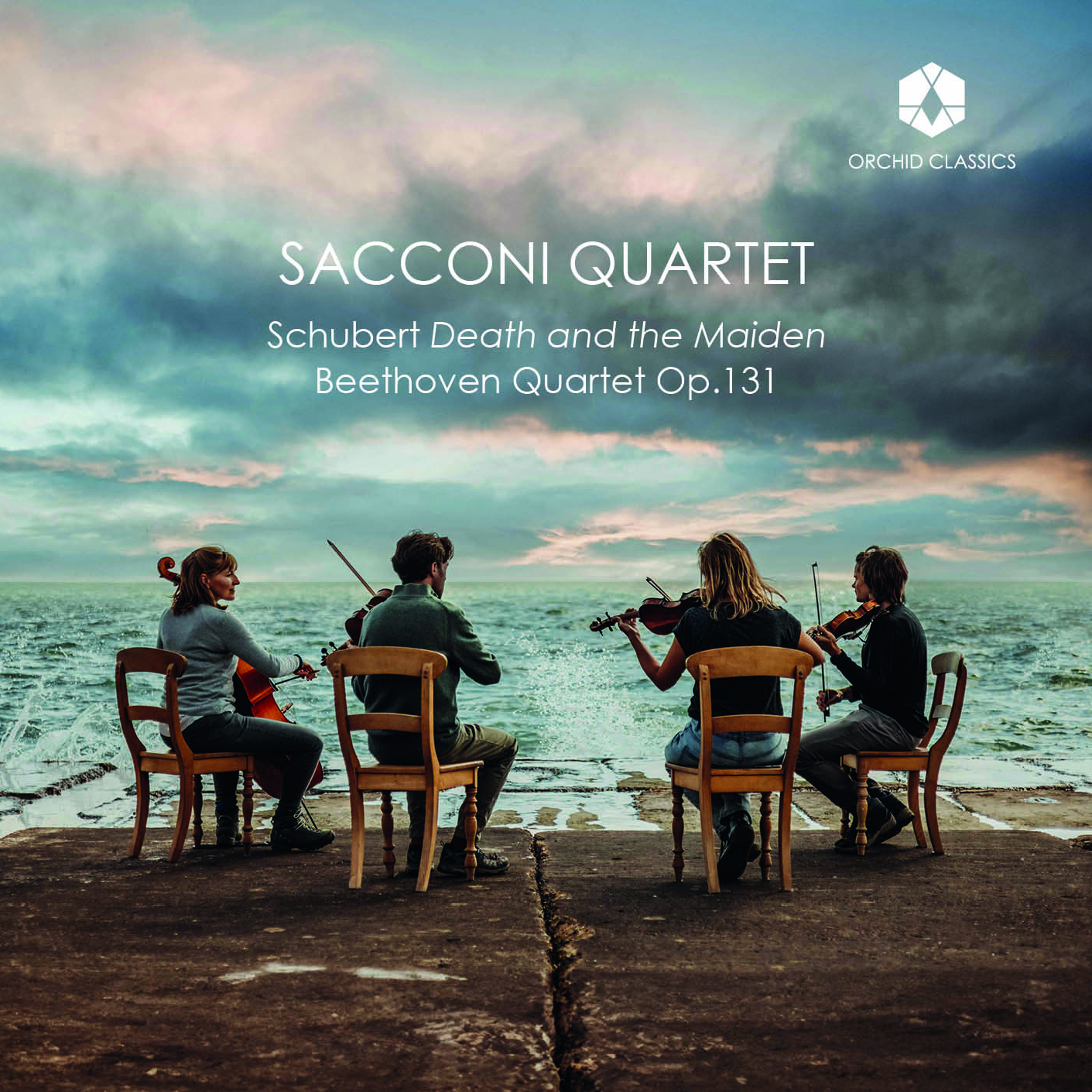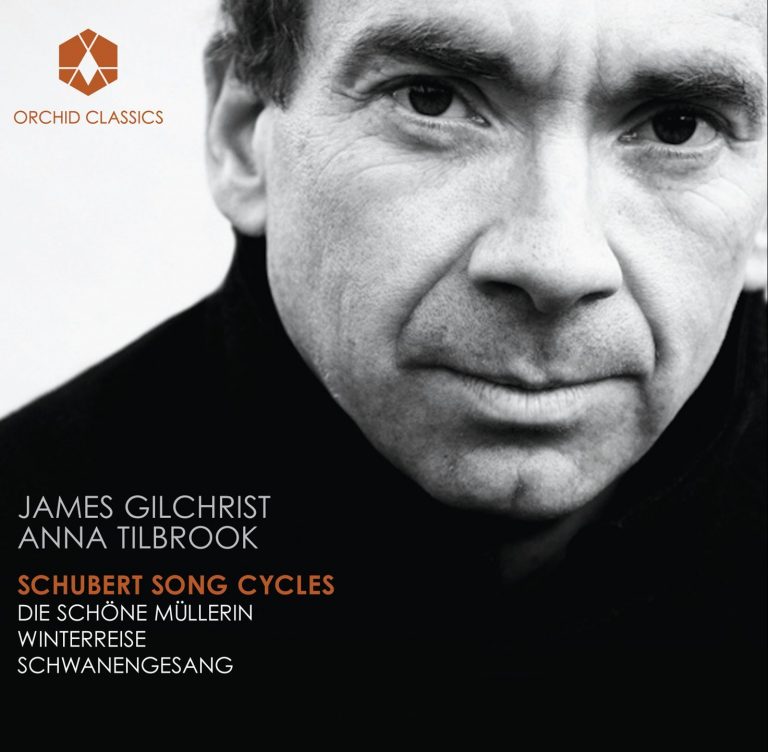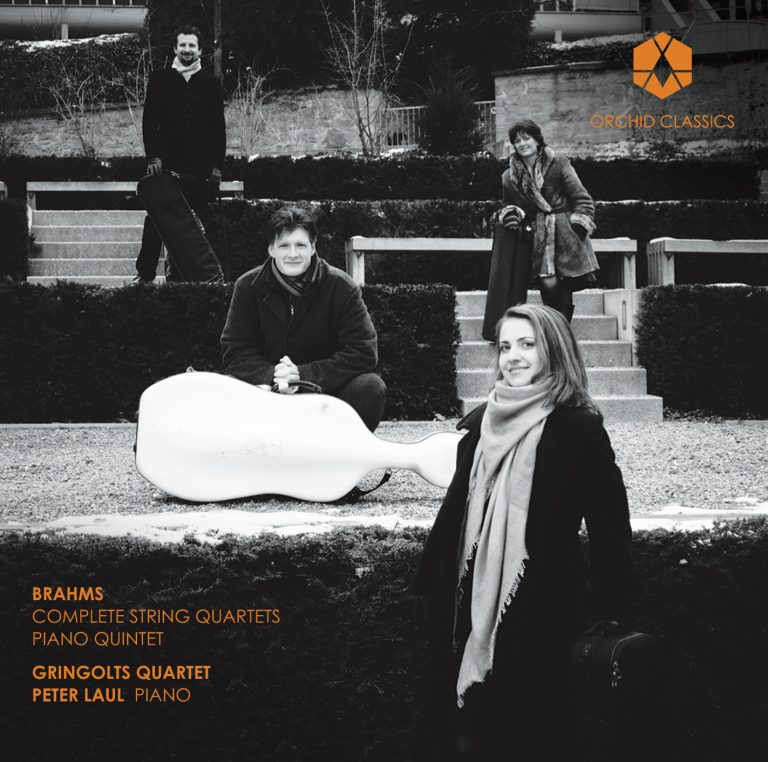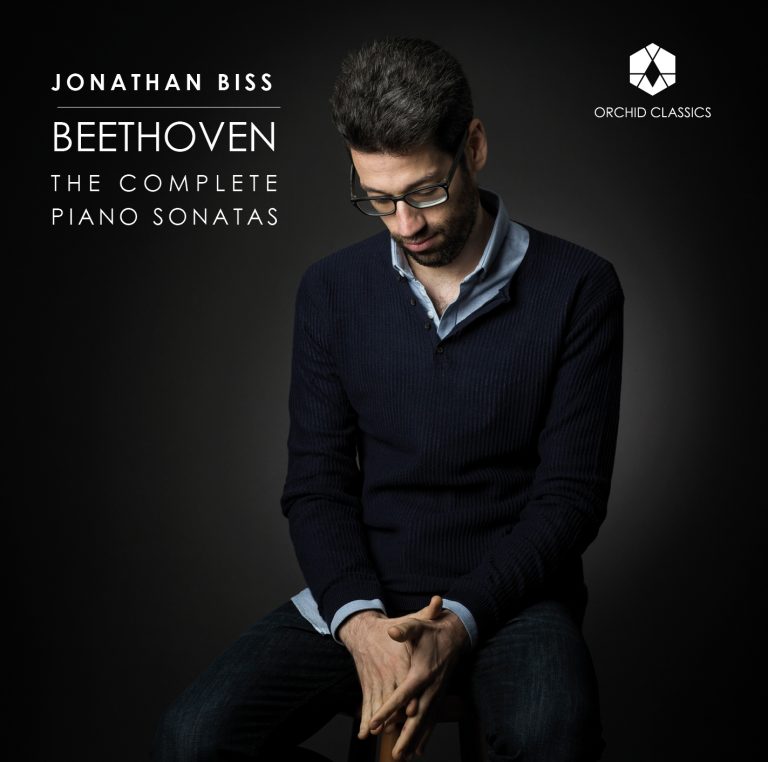Artist Led, Creatively Driven

Schubert Death and the Maiden
Beethoven Quartet Op.131
Sacconi Quartet
Release Date: November 10th
ORC100265
Franz Schubert (1797-1828)
String Quartet No.14 in D minor D.810, Death and the Maiden
1. I Allegro
2. II Andante con moto
3. III Scherzo
4. IV Presto
Ludwig van Beethoven (1770-1827)
String Quartet No.14 in C sharp minor, Op.131
5. I Adagio ma non troppo e molto espressivo
6. II Allegro molto vivace
7. III Allegro moderato
8. IV Andante ma non troppo e molto cantabile
9. V Presto
10. VI Adagio quasi un poco andante
11. VII Allegro
Sacconi Quartet
Ben Hancox, violin
Hannah Dawson, violin
Robin Ashwell, viola
Cara Berridge, cello
The string quartet. So simple in form; so infinite in possibilities. For two decades and more, we have strived to bring this music to life. Music that we hold so dear to our hearts; music that we believe in, that we are passionate about; music that we are committed to sharing. We are still learning, still exploring, still discovering. For our 21st birthday, we wanted to make an album of some of the music that means the very most to us, and these two quartets were obvious choices. We have rehearsed them, performed them, travelled with them, literally lived with them for most of our career. They are all-consuming works of art, the epitome of human creation, which we are honoured to be involved with and privileged to be able to bring to life in performance.
Sacconi Quartet
Schubert composed his song Der Tod und das Mädchen in February 1817 to a poem of 1775 by Matthias Claudius (1740-1815). Claudius was editor of the Der Wandsbecker Bothe (The Wandsbeck Messenger), whose ideals moved against some of the prevailing attitudes of enlightenment and sought to preserve a Christian atmosphere in literature. This Christian quality, with Death offering a comforting sleep and a release from the travails of everyday life rather than being a fearsome presence, underlies this short poem, which presents an imaginary dialogue between two people, Das Mädchen and Der Tod. The young maiden frantically pleads with the skeletal figure of Death to pass her by and not touch her, but Death gently tells her that he is a friend and that she will soon sleep in his arms.
In the spring of 1823 Schubert was admitted to hospital, suffering from the early stages of syphilis. It is clear from his letters that he began to face his own mortality and it is against this backdrop that the D minor Quartet was composed in 1824, the song having a strong resonance with the composer’s personal situation. He intended to write three quartets dedicated to Ignaz Schuppanzigh, a celebrated violinist and quartet leader, whose association with Beethoven’s Quartets would make him a worthy dedicatee. In the event, only two were written with a dedication, the first being the Quartet in A minor, D.804 and then the D minor. Schuppanzigh liked the A minor Quartet but was less enamoured of the D minor and this may have been a contributing factor in Schubert’s decision not to dedicate a third quartet. The work was not published until after Schubert’s death and may not have been performed before he died.
A set of variations on Der Tod und das Mädchen forms the slow movement. Schubert’s theme utilises the eight-bar piano introduction to the song (representing Death). The theme has a distinctive dactylic rhythm (a long note and two shorter ones) that is also found in a pavane, and its sombre mood is created by the low tessitura of the melody and the shifting harmonies within treble and bass notes that remain static. This is music of despair, reflecting on youthful mortality.
While Schubert was working on this Quartet, Beethoven was composing his ‘late’ string quartets, separated from his earlier quartets by a period of twelve years. A letter to the publisher Peters in the summer of 1822 indicates that he was contemplating a quartet but the real spur to composition was a request in November 1822 from Prince Nikolas Galitzin of St. Petersburg for ‘one, two or three new quartets’. Galitzin was an amateur cellist and a great admirer of Beethoven, and he promised to pay whatever ‘you think proper’. Sadly, Galitzin suffered family losses and bankruptcy and, when Beethoven sent him the B flat Quartet, Op.130 in 1826, only part of the commission fee had been paid and the composer was owed 600 florins. The Prince stalled on his payment and Beethoven never received it. The debt was finally paid off in 1852, twenty-five years after the composer’s death, when it went to his nephew, Karl van Beethoven.
When he had finished the three quartets for Prince Galitzin, Beethoven embarked on the Quartet in C sharp minor. There was no commission for this (though his publishers had indicated that they would like more) – he simply wanted to write it, almost as though he was driven by an urge to continue the series of quartets. His friend, the violinist Karl Holz, wrote that Beethoven seemed to compose the C sharp minor and the F major Quartets almost involuntarily, jotting ideas down in his notebooks while the two friends were out walking.
We now know that, while the first three quartets have their obvious link to the Prince and his commission, the second and third Galitzin quartets and the C sharp minor have a musical link of four notes which form a kind of ‘motto’ theme, creating a motivic relationship between the quartets. It is perhaps worth pointing out that the opus numbers do not quite correspond to the order of composition: the three Galitzin quartets are, in order of composition, E flat Op.127, A minor Op.132 and B flat Op.130. The B flat Quartet has the Grosse Fuge as its final movement. The Grosse Fuge was published as a separate movement (Op.133) and replaced by a shorter Allegro, this latter work being Beethoven’s last completed composition of any kind. The C sharp minor quartet, Op.131, dates from 1826, while the final one is the F major Op.135. Beethoven is said to have considered the B flat Quartet to be his favourite and the C sharp minor to be his greatest. He dedicated it to Baron Joseph von Stutterheim, as a gesture of gratitude for taking his nephew, Karl, into the army after a failed suicide attempt.
The seven movements of Op.131 were designed by Beethoven to be played with as little a break between them as possible. The traditional four-movement scheme may be discerned within this plan: the first two movements form a pair (Beethoven’s studies of Baroque music may have suggested a slow-fast overture model), then movements three and four constitute an Introduction with Variations, a Scherzo is provided by movement five and, finally, the last two movements make a Finale with a slow Introduction. Equally, one may also view the structure as the usual four with a fugal prologue and two interludes (movements three and six). Ultimately the beauty of this Quartet is that it does not yield its secrets easily – all the late quartets have an inexhaustible depth to them that can never be fully explored.
After this sublime Quartet, Beethoven still had the F major Quartet and the replacement finale for the Grosse Fuge to write. He had not yet finished exploring his world of music, although some will argue that the C sharp minor Quartet is the summation of his art.
Duncan Eves
Sacconi Quartet
For over two decades, the Sacconi Quartet have been captivating audiences with their unanimous and compelling ensemble, consistently communicating with a fresh and imaginative approach. Formed in 2001, the four founder members share an unwavering passion for the string quartet repertoire, infectiously reaching out to audiences with their energy and enthusiasm. The Sacconis enjoy a busy international career, performing regularly across the world, at Europe’s major venues, in recordings and on radio broadcasts. The Sacconi is Quartet in Association at the Royal College of Music and Quartet in Residence for the town of Folkestone. Unchanged since its inception, Sacconi is Britain’s longest-established string quartet.
The Sacconi’s prolific recording career covers a broad swathe of repertoire from Haydn to present day. Releases of recent years include premiere recordings of works by Roxanna Panufnik, Jonathan Dove, Graham Fitkin and John McCabe, and a piano quintet album with Peter Donohoe. In Damascus, their album of music by Jonathan Dove including In Damascus, commissioned by the quartet, and featuring Mark Padmore and Charles Owen, hit the Classical Top Ten, and was chosen as one of Gramophone Magazine’s Recordings of the Year: “This important release cannot be recommended too highly”. Their complete recording of Graham Fitkin’s string quartets and their collection of Roxanna Panufnik’s chamber works entitled Heartfelt were released to critical acclaim and will be followed by further albums of Dove and Fitkin.
Champions of new music, the Sacconis have given over thirty world premieres. For their twentieth anniversary, the Quartet commissioned Jonathan Dove’s second quartet On the Streets and In the Sky. Their film of Dove’s first quartet Out of Time was released on Amazon in 2021. They continue to tour with Beethoven in the Dark, their immersive performance of Beethoven’s Op.131 quartet entirely from memory, in almost complete darkness, which has captivated audiences around the world.
As the result of a generous grant, the Sacconi Quartet are Quartet in Residence for the town of Folkestone and its surrounding areas. This is enabling creative collaborations with local artists and projects and includes an embedded outreach programme. Performances of Beethoven on the Beach and Glass on the Warren seafront have attracted large audiences, many of them experiencing the energy of chamber music for the very first time. Their Sacconi Chamber Music Festival in Folkestone is firmly established among the UK’s major chamber music festivals and attracts audiences from far and near for its vibrant atmosphere and dynamic programming.
The name Sacconi Quartet comes from the outstanding twentieth-century Italian luthier and restorer Simone Sacconi, whose book The Secrets of Stradivari is considered an indispensable reference for violin makers. Ben Hancox plays a 1932 Sacconi violin and Robin Ashwell a 1934 Sacconi viola, both made in New York. Hannah Dawson plays a 1927 Sacconi violin made in Rome, and Cara Berridge plays a Nicolaus Gagliano cello from 1781. Their gratitude extends to the Royal Society of Musicians and Ellen Solomon for generously providing them with these exceptional instruments.









